- Home
- Prelims
- Mains
- Current Affairs
- Study Materials
- Test Series
Feb 07, 2022
THE FRACTURED DIPLOMACY OF COUNTERING TERRORISM
Taliban walked back into Kabul, and today, one way or another, the world is divided on how to deal with the militant group regaining control over Afghanistan.
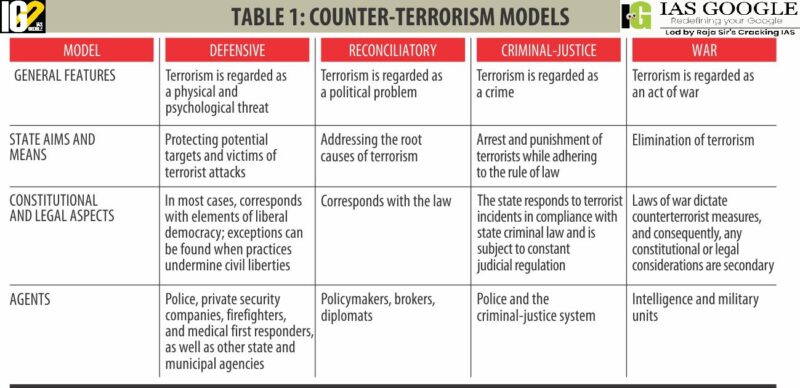 Reasons for fractured diplomacy of countering terrorism?
Reasons for fractured diplomacy of countering terrorism?
 Impact:
Impact:
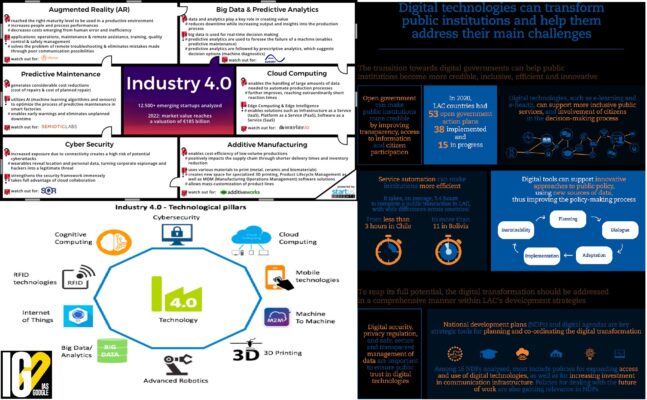 Data paradox?
Data paradox?
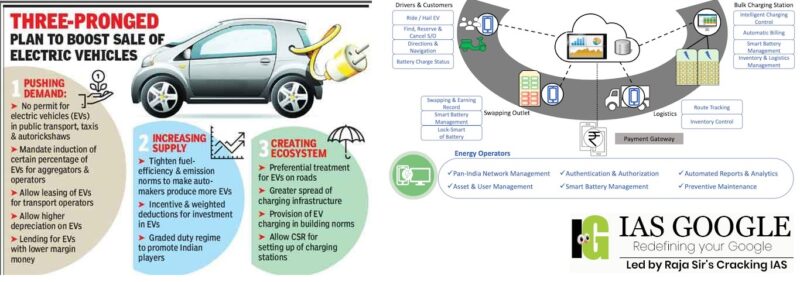
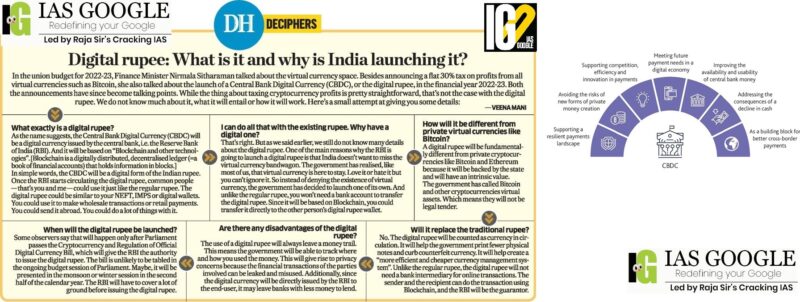 Central Bank Digital Currency?
Central Bank Digital Currency?
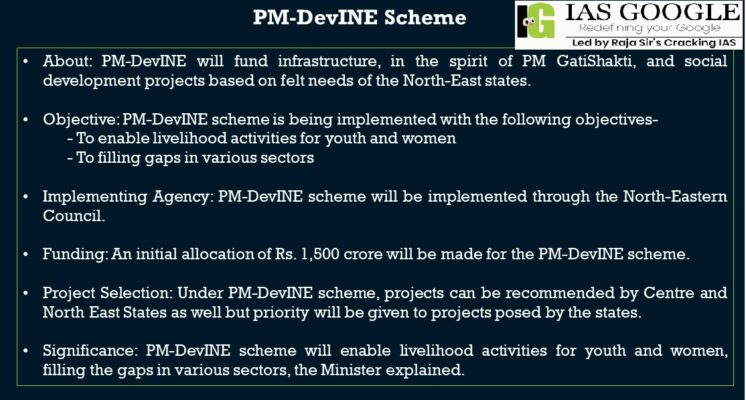 PM-DevINE?
PM-DevINE?
 What are Green Bonds?
What are Green Bonds?
 Genesis:
Genesis:
 Genesis:
Ukraine has become the focus of geopolitical attention in recent weeks as a Russian troop build-up along its eastern border and a list of demands from the Kremlin have prompted threats of sanctions by the West and military deployment by NATO allies.
Ukraine important to Russia:
Genesis:
Ukraine has become the focus of geopolitical attention in recent weeks as a Russian troop build-up along its eastern border and a list of demands from the Kremlin have prompted threats of sanctions by the West and military deployment by NATO allies.
Ukraine important to Russia:
 What is Neglected Tropical Diseases?
What is Neglected Tropical Diseases?
- In January, India assumed the chair of the Security Council Counter-Terrorism Committee of the United Nations (UN). The seat gives India a great podium to highlight the cross-border terrorism it has faced over the decades, much of which has been highlighted repeatedly as a state policy act of Pakistan.
 Reasons for fractured diplomacy of countering terrorism?
Reasons for fractured diplomacy of countering terrorism?
- Lack of proper definition related to terrorism.
- At multiple forums, diplomacy of terrorism has often been used as a tool to stifle or support geopolitical rivalries, instead of rallying a common global narrative. e.g., recent attack by Houthi militants against UAE.
- Hegemony in the international system by one or two actors will cause a high level of transnational anti-systematic terrorism as a war by proxy develops. Therefore, terrorism can represent a backlash against globalisation and modernisation.
- De-legitimization of terrorism: De-legitimisation is a process of discrediting a targeted individual, group, organisations and other objects.
- Comprehensive vs sectoral approach: Third world countries such as India and Algeria regarded terrorist bombing, hostage taking, the kidnapping of diplomats, terrorist financing and the use of weapons of mass destruction, not as terrorism per se but distinct manifestations of terrorism because they follow comprehensive approach.
- Root cause approach: The supporters of this approach insist on addressing the underlying causes that lead to the birth, expansion and persistence of terrorism.
- Coercive measures consist of sanctions and the use of force.
- Country should take legal measures via drafting resolution at global level in various global forums and to agree upon a universal definition of terrorism and to outline special laws under which all terrorists could be prosecuted
- Compliance and domestic implementation through amendments in domestic laws such as india amended Unlawful Activities (Prevention) Act and should become signatory to various counter-terrorism conventions.
- Promotion of international cooperation.
- India had played an important role in the drafting of the General Assembly Resolution 40/6 in 1987.
- In 1996, India tabled the Draft International Convention on Suppression of Terrorism in the General Assembly, which aimed to deal with state support to terrorism.
- The major domestic response to Mumbai has been an emphasis on streamlined coordination between agencies across state and federal lines, and the creation of a new National Investigation Agency (NIA)
- The aim of the NIA is to empower a federal agency to investigate major crimes such as terrorism and organized crime without having to be asked to do so by the states.
- There will be special courts that can rapidly hear terror-related cases.
- The Measures to Prevent Terrorists from Acquiring Weapons of Mass Destruction (2002) and the Comprehensive Convention on International Terrorism (1996) are the two most noticeable drafts sponsored by India at the General Assembly.
- In response to the UN call to become a signatory to counter-terrorism conventions, India has become the party to 14 major legal instruments on countering and suppressing international terrorism.
- Coercive steps taken by India can be seen during Pulwama attacks and Uri attack as well.
- Terrorism is one of the most severe threats to global security. India advocates that terrorism cannot and should not be seen in us versus their framework and fought through a strategy fragmented in lines with international borders. Rather, it should be universally defined as ‘criminal and unjustifiable act’.
- The international community must adopt a universal ‘zero tolerance’ policy to tackle the menace effectively. “The promotion and protection of human rights for all and the rule of law is essential to all components of the Strategy, recognizing that effective counter-terrorism measures and the promotion of human rights are not conflicting goals, but complementary and mutually reinforcing”.
- “The Drone Shakti announcement shows government's clear vision and focus towards this emerging industry.
 Impact:
Impact:
- The country will witness the use of large unmanned aircraft systems weighing more than 150 kilograms across the sectors.
- Kisan Drones are already being used for crop assessments, land records, spraying of insecticides, and are expected to boost a wave of technology in the Agri and farming sector.
- The drones-as-a-service (DrAAS) model is also expected to help consolidate India’s fragmented drone industry and encourage manufacturers and service providers to collaborate, industry executives said.
- Drone Shakti scheme, can be translated as the ‘power of drones.
- Start-ups will be promoted to facilitate ‘Drone Shakti’ through varied applications and for Drone-As-A-Service (DrAAS)
- Courses for skilling will also be started in selected ITIs across all States.
- Emerging technologies being expensive or their use is not understood by most customers, DrAAS will allow service providers to transfer the benefits of technology to customers in all sectors without having to invest in the capital expenditure
- Drone Shakti’s perspective is consolidating the efforts in the drone ecosystem (i.e.) basically institutionalizing and creating a framework where multiple stakeholders can work together.
- It also makes adoption (of drones) economical for customers and provides incentives to manufacturers and service providers to work together on a continuous cycle of innovation.
- Drone Shakti will enable easier demonstration through service providers, and not limit it to drone manufacturers with limited funds.
- This will help demonstrate returns on investment and expand the scope of businesses.
- The operation of these drones is not limited to manufacturers, even the service providers can buy drones and offer crop health monitoring as a service.
- Idea Forge had signed a $20 million contract with the Indian Army in January 2021 to supply drones.
- Several states are examining technical and safety parameters to allow application of drones.
- Implementation will also require that the customers availing the services are properly trained to use the drones.
- Farmers who prefer to use drones, proper training will be required so that they are aware of the technology so they can use it in the best possible way.
- Applying for a license and getting it through DGCA will still be a challenge.
- Drone pilot license can be relooked due to the administrative challenges it poses.
- The Centre's new drone policy announced in August 2021, was designed to usher in an era of super-normal growth while balancing safety and security considerations.
- Built on a premise of trust, self-certification and non-intrusive monitoring.
- Designed to usher in an era of super-normal growth while balancing safety and security considerations.
- Several approvals abolished: unique authorisation number (UAN), unique prototype identification number (UPIN), certificate of manufacturing and airworthiness (CMA), certificate of conformance (CC), certificate of maintenance (CM), import clearance (IC), acceptance of existing drones (AED), operator permit (OP), authorisation of R&D organisation (ARDO), student remote pilot license (SRPL), remote pilot instructor authorisation (RPIA), drone port authorisation (DPA) etc.
- The number of forms reduced from 25 to 5.
- Types of fees reduced from 72 to 4.
- Quantum of fee reduced to nominal levels and delinked with size of drone. For instance, the fee for a remote pilot license fee has been reduced from INR 3000 (for large drones) to INR 100 for all categories of drones; and is valid for 10 years.
- Digital sky platform shall be developed as a user-friendly single-window system. There will be minimal human interface and most permissions will be self-generated.
- Interactive airspace map with green, yellow and red zones shall be displayed on the digital sky platform within 30 days of publication of these rules.
- No permission required for operating drones in green zones. Green zone means the airspace up to a vertical distance of 400 feet or 120 meter that has not been designated as a red zone or yellow zone in the airspace map; and the airspace up to a vertical distance of 200 feet or 60 meter above the area located between a lateral distance of 8 and 12 kilometer from the perimeter of an operational airport.
- Yellow zone reduced from 45 km to 12 km from the airport perimeter.
- No remote pilot license required for micro drones (for non-commercial use) and nano drones.
- No requirement for security clearance before issuance of any registration or license.
- No requirement of Type Certificate, unique identification number and remote pilot license by R&D entities operating drones in own or rented premises, located in a green zone.
- No restriction on foreign ownership in Indian drone companies.
- Import of drones to be regulated by DGFT.
- Requirement of import clearance from DGCA abolished.
- Coverage of drones under Drone Rules, 2021 increased from 300 kg to 500 kg. This will cover drone taxis also.
- DGCA shall prescribe drone training requirements, oversee drone schools and provide pilot license's online.
- Remote pilot license to be issued by DGCA within 15 days of pilot receiving the remote pilot certificate from the authorised drone school through the digital sky platform.
- Testing of drones for issuance of Type Certificate to be carried out by Quality Council of India or authorised testing entities.
- Type Certificate required only when a drone is to be operated in India. Importing and manufacturing drones purely for exports are exempt from type certification and unique identification number.
- Nano and model drones (made for research or recreation purposes) are exempt from type certification.
- Manufacturers and importers may generate their drones’ unique identification number on the digital sky platform through the self-certification route.
- Easier process specified for transfer and deregistration of drones through the digital sky platform.
- Drones present in India on or before 30 Nov 2021 will be issued a unique identification number through the digital sky platform provided, they have a DAN, a GST-paid invoice and are part of the list of DGCA-approved drones.
- Standard operating procedures (SOP) and training procedure manuals (TPM) will be prescribed by DGCA on the digital sky platform for self-monitoring by users. No approvals are required unless there is a significant departure from the prescribed procedures.
- Maximum penalty for violations reduced to INR 1 lakh.
- Safety and security features like ‘No permission – no take-off’ (NPNT), real-time tracking beacon, geo-fencing etc. to be notified in future. A six-month lead time will be provided to the industry for compliance.
- Drone corridors will be developed for cargo deliveries.
- Drone promotion council to be set up by Government with participation from academia, start-ups and other stakeholders to facilitate a growth-oriented regulatory regime.
- The Ministry of Civil Aviation said these rules were built on the premise of trust, self-certification, and non-intrusive monitoring.
- The rules are based on the premise of trust and self-certification. Approvals, compliance requirements and entry barriers have been significantly reduced.'
- The union Ministry of Agriculture and Farmers Welfare amended the guidelines of the sub mission on agricultural mechanisation to promote use of drones in agriculture.
- It will provide grants of up to 100% to agriculture enterprises on purchase of drones.
- Under the liberalized Drone Rules 2021, payload capacity for drones for farming activities was increased from 300kg to 500kg.
- India had approved a PLI scheme for manufacturing drones and drone components in the country.
- Drones are also being used in surveillance systems for Railway Security.
- Pilot project, where drones are deployed to deliver Covid-19 vaccines is being led by the ICMR, is rolled out in Manipur, Nagaland and Andamans and Nicobar Islands.
- Drones are also being used for surveillance of Covid-19 hotspots and containment zones.
 Data paradox?
Data paradox?
- The world could generate more data in the next three years than over the past 30.
- The explosive growth of datalike human population, owes 40% of internet traffic that are being generated by machines, between machines.
- This trend will likely continue and accelerate as the number of networked devices in the world is projected to reach a staggering 125 billion by 2030.
- We live in an information, not a knowledge society, A recent survey showed that 70%of data decision makers are gathering data faster than they can analyse and use it, yet 67% constantly need more data.
- The massive opportunity brought about by data-driven decisions is being hampered by capacity constraints and “defensive” narrative on data governance and policy, which rightfully places paramount importance on accountability, transparency, and privacy.
- How can this demand-capacity mismatch adopt a more balanced “offensive” strategy to maximize value from data and ensuring safety and compliance?
- Answer is simple -right people, institutions, and culture to unlock and harness the data opportunity and more importantly, companies cannot do this alone. No more, no less.
- A starting point would be to formalize a Chief Data Officer (CDO) role: a real data scientist and visionary with clearly defined responsibilities. The CDO, with a supporting cast, would be responsible for:
- Designing, implementing, and overseeing a holistic data strategy (from collection to analytics to monetization) that informs business decisions and units;
- Facilitating the free-flowing of data, data-driven insights, and data-related managerial decisions both internally and with external partners and regulators;
- Supporting (Human Resource) in recruiting or upskilling/reskilling employees.
- This centralized CDO role can also play the role of the Chief Information Officer or the Chief Privacy Officer, and the Chief Economist and Strategy Officer at present. The idea is utilizing the data for business and regulatory purposes and reduce efficiency losses and information siloes caused by jurisdiction or capacity problems, while ensuring privacy compliance.
- Data as a new strategic asset, so present and future economy should focus on smart and responsible generation by including, institutions—data-related rules, regulations, agreements, and governing bodies within and across national borders and must be modernized.
- Pioneer efforts such as the Digital Economy Partnership Agreement (DEPA) initiated by Singapore, Chile, and New Zealand.
- EU’s- General Data Protection Regulation (GDPR), and the World Economic Forum’s- Data for Common Purpose Initiative (DCPI)
- The above have been exploring the prospects and limits of next-generation data governance and of making data more widespread and open.
- The global agreement on the Ethics of Artificial Intelligence led by UNESCO is among the most promising global efforts to guide smart regulation towards healthy development of this field.
- Nationally: Governments should increase data and broader digital readiness. Internationally: Some sort of institution like “IMF or WTO on data” could be an asset, given the international nature of data flows for instance.
- The International Standard Industrial Classification of All Economic Activities (ISIC) said handful of data activities were considered subsectors of the economy within the “Information and Communication” sector.
- Though being a subsector, the depth of the economic, political and social change brought about by data in the last 14 years has to be seriously taken as ignoring these can create more harm.
- The gap in digital connectivity, data science skills shortage, investment in Latin American and the Caribbean has to take care by private sector, along with governments and education institutions, who can deliver that in 3-6 months as cannot wait for 3–4-year programmes.
- Transforming data from a raw material into a genuine factor of production and engine of innovation requires changes at the individual and organizational levels.
- COVID-19, while being a tragedy in other sectors, has been a catalyst for this cultural change.
- For example, effective data on cases and medical practices all over the world has been an effective area of public-private collaboration in pandemic response for containing the spread of the virus in several countries.
- As 5G, AI, and other technologies reinforce both data supply and demand, this is the time to update our approach to data in a more forward-looking way. With the right people, institutions, and culture, we can build the economies of the future and use data as a driver of change for good.

- The electric vehicle (EV) industry will get a big push, especially on the public transport front with the formulation of a Battery Swapping Policy
- Battery swapping allows consumers to replace their depleted batteries with fully-charged ones at dedicated stations.
- The shorter charging time with battery swapping also increases the up time for EVs bought for commercial use.
 Central Bank Digital Currency?
Central Bank Digital Currency?
- According to the Reserve Bank of India, a central bank digital currency (CBDC) is the legal tender issued by a central bank in a digital form.
- It is the same as fiat currency and is exchangeable one-to-one with the fiat currency.
- Central banks dwindling with usage of paper currency, seek to popularise a more acceptable electronic form of currency (like Sweden).
- Jurisdictions with significant physical cash usage seeking to make issuance more efficient (like Denmark, Germany, Japan, USA etc.)
- Central banks seek to meet the public's need for digital currencies, manifested in the increasing use of private virtual currencies.
- To avoid damaging socio-economic consequences of private currencies as they are not controlled by any central authority.
- It will reduce the dependency on cash.
- It will provide high seigniorage due to lower transaction costs.
- It will reduce settlement risks.
- It will be a more robust, efficient, trusted, regulated and legal tender-based payments option.
- It will reduce huge capital expenditure for the government of printing currencies.
 PM-DevINE?
PM-DevINE?
- It will finance infrastructure in the spirit of PM Gati Shakti and social developmental projects established on the felt needs of the Northeast.
- For example, Bamboo link roads in Mizoram to help transport bamboo from forests and management of pediatric and adult hematolymphoid (head and neck) cancers in the region.
- It will be executed through the North-Eastern Council.
- The states slated to benefit include Assam, Arunachal Pradesh, Meghalaya, Manipur, Mizoram, Sikkim, Nagaland, and Tripura.
- This will enable livelihood activities for youth and women.
- It is aiming to fill the gaps in various sectors, such as socio-economic development, infrastructural development, etc.
- It is aiming to bring the rest of India closer to North-East India.
- It is aiming to provide better infrastructure and connectivity in the North-Eastern states.
- Rail and air connectivity are no longer a dream for the people of the Northeast. All the capitals of the North-eastern states are now being brought on the railway map.
- The NER is strategically located with access to the traditional domestic market of eastern India, along with proximity to the major states in the east and adjacent countries such as Bangladesh and Myanmar.
- It will enhance the tourism sector in the North-East region.
- It is a National Master Plan for Multimodal Connectivity.
- This is a digital platform that aims to bring 16 Ministries including Railways and Roadways together for integrated planning and coordinated implementation of infrastructure connectivity projects.
- The last-mile connectivity of infrastructure will be facilitated to reduce travel time for people.
- It is based on six pillars:
-
- Comprehensiveness
- Optimisation
- Prioritisation
- Synchronisation
- Analytical
- Dynamic
- North Eastern Council (NEC) is a statutory advisory body constituted under the North Eastern Council Act 1971 and came into being on 7 November 1972 at Shillong.
- The eight States of Northeast India viz. Arunachal Pradesh, Assam, Manipur, Meghalaya, Mizoram, Nagaland, Tripura and Sikkim, are members of the council.
- It is the nodal agency for the economic and social development of the North Eastern Region.
- NEC members: The Governors and the Chief Ministers of the 8 states including Sikkim, Chairman and 3 members who are nominated by the country’s President.
- It aims to discuss matters related to socio-economic and infrastructural planning and to formulate proposals for securing the balance between the development of north east areas with regard to coordinate and unified regional planning.
 What are Green Bonds?
What are Green Bonds?
- Green Bonds are those issued by any sovereign entity, inter-governmental groups or alliances and corporates, with the aim that the proceeds of the bonds are utilised for projects classified as environmentally sustainable. This will also improve the ESG (Environmental, Social and Governance) climate in the country.
- They are a financial innovation designed to facilitate sustainable investing for institutional investors such as pension funds, insurance companies, mutual funds, and sovereign wealth funds.
- Use of green bonds for environment-focused projects is expected to boost financing for clean energy.
- Secure legitimacy in the face of societal level pressures to demonstrate sustainable business practices.
- Demonstrate accountability to identifiable stakeholders with sustainability demands on the organisation.
- Green bonds may offer tax incentives to attract investors, such as tax exemption and tax credits.
- These green bonds have been crucial in increasing financing to sunrise sectors like renewable energy, thus contributing to India’s sustainable growth.
- It is going to move towards carbon neutrality.
- It can help mobilise financial resources for distribution companies as well as for clean energy investors.
- It further moves towards achieving SDG Goals 2030.
- It is making aggressive strides towards a low-carbon economy with ambitious targets like achieving a robust 175 gigawatt of renewable energy capacity by the year 2022.
 Genesis:
Genesis:
- The Pashtun Empire disintegrated after the fall of the Durrani dynasty in the 18th century and the British eventually extended their control to the region.
- A policy reassessment was undertaken when the two Anglo-Afghan wars (1838-42 and 1878-80) failed to expand British influence and tame the belligerent tribal groups.
- A tripartite frontier was postulated with three concentric frontiers:
-
- The first at the foothills of the Sulaiman hills, till where the British had formal control;
- The second where the vassal states under the ‘influence’ of British were located; and
- The final buffer which was Afghanistan itself.
- The Durand Line is a legacy of the 19th century Great Game between the Russian and British empires.
- The British Empire used Afghanistan as a buffer against a feared Russian expansionism to its east.
- The agreement demarcating what became known as the Durand Line was signed on November 12, 1893.
- The agreement was signed between the British civil servant Sir Henry Mortimer Durand and Amir Abdur Rahman, the then Afghan ruler.
- The line stretches from the border with China to Afghanistan’s border with Iran.
- The bilateral relationship between Afghanistan and Pakistan has always been under stress and a major point of contention is the Durand Line.
- Afghanistan considers Durand Line a ‘historic mistake’, a vestige of British colonialism that the Afghanis don’t accept.
- Pakistan considers it the legally binding international border and regards the fencing as a fait accompli as 90 percent of it is completed.
- The ‘policing’ of the border to exercise national sovereignty and territoriality has had an adverse impact on the closely knit sense of community that the people feel.
- The borders became imperative in the transition from a colony to a nation state for the newly independent countries in South Asia.
- The border fencing is a means of regulating the movement and obstructing the smuggling of drugs and goods that has continued unabated.
- The borders in South Asia can be protected by making them as social bridges and using only military means will only increase its political volatility and the subsequent violence.
- It is an international agreement regulating treaties between states.
- It establishes comprehensive rules, procedures, and guidelines for how treaties are defined, drafted, amended, interpreted, and generally operated.
- The convention was adopted and opened to signature on 23 May 1969 and it entered into force on 27 January 1980.
- It was drafted by the International Law Commission (ILC) of the United Nations.
 Genesis:
Ukraine has become the focus of geopolitical attention in recent weeks as a Russian troop build-up along its eastern border and a list of demands from the Kremlin have prompted threats of sanctions by the West and military deployment by NATO allies.
Ukraine important to Russia:
Genesis:
Ukraine has become the focus of geopolitical attention in recent weeks as a Russian troop build-up along its eastern border and a list of demands from the Kremlin have prompted threats of sanctions by the West and military deployment by NATO allies.
Ukraine important to Russia:
- Ukraine was part of the Soviet Union before it collapsed at the end of the Cold War in 1991, and it borders Russia to its east.
- The disintegration of the Soviet Union left Russia with a vastly depleted population, territory and economy.
- It also diminished Russia’s superpower status.
- Now Russian President Vladimir Putin is seeking to reclaim some of that glory and undo some of what Russia lost in the Cold War. He has described Russians and Ukrainians as “one people, a single whole."
- Actions by Russia at Ukrainian borders that raises suspicion:
- Moscow has amassed 100,000 troops near the Ukrainian border and has been moving tanks, infantry fighting vehicles, rocket launchers and other military equipment westward from bases in Russia’s far east.
- Russia is moving troops and S-400 surface-to-air missile systems into Belarus, which borders Ukraine and NATO members Poland, Latvia and Lithuania.
- Russia also has moved several ships near Ukraine’s shores in the Black Sea and the Sea of Azov.
- It has announced new military exercises in the North Caucasus.
- It had sent medical units to the front, moving to a level of readiness that hadn’t reached in past build-ups.
- Mr. Putin’s goal is to extract concessions from Ukrainian President Volodymyr Zelensky and force him to give Russia a say in Ukraine’s future. That would send a message to other former Soviet states that the West can’t guarantee their security.
- Ukraine is located in Eastern Europe and its eastern flank borders Russia. To the west, it is bordered by Poland, Slovakia, Hungary, Romania and Moldova, and to the north by Belarus.
- The Black Sea runs along Ukraine’s southern coast.
- Ukraine at present is not a part of the North Atlantic Treaty Organization but it is a “partner country “to the military alliance, and agreements in place mean it could become a NATO member in the future.
- NATO allies are bolstering the alliance’s eastern flank, which borders Ukraine, deploying jet fighters and ships to the region in response.
- The European Union has set out plans for loans and grants to Ukraine worth more than $1.3 billion.
- The Pentagon ordered thousands of troops to prepare for possible deployment.
- Mr. Putin want to reassert Russia’s influence over its neighbours, particularly Ukraine.
- In 2014, he annexed Ukraine’s Crimean Peninsula, fomenting an eight-year war in the country’s east.
- He has left Western leaders guessing whether he would stage a major invasion of Ukraine and breakdown in ties with the West, or whether he would be satisfied with wringing a few concessions (which include NATOs guarantee that it won’t give membership to Ukraine).
- He demanded that NATO curb military exercises in Ukraine and other former Soviet nations, and that the alliance pull its forces back from its eastern member states. As NATO deployed about 5,000 troops to Poland and the Baltic countries after Russia invaded Ukraine in 2014.
- The U.S. and its allies rejected Moscow’s demands arguing that states are free to associate with any other states they choose.
- The U.S. delivered unpublished proposals to the Russian Foreign Ministry on ways to avoid confrontations in the Black Sea and missile-related inspections on each side.
- Moscow said Mr. Putin would take his time considering the proposals but there was little room for optimism.
- It would amount to the largest invasion since World War II.
- US has warned severe consequences, including significant economic sanctions, beef US forces presence, NATO’s presence, in an eastern front, Poland, Romania, etc."
- Nord Stream 2 is a natural-gas pipeline that runs from Russia to Germany, a NATO member, and is awaiting signoff from German regulators.
- U.S. lawmakers and some officials worry that the 764-mile pipeline will strengthen Russia’s grip on the European energy market and weaken Ukraine, which hosts a gas-transit network, as it tries to resist Russian aggression. Germany is the world’s biggest buyer of Russian gas, drawing more than half of its supply from Russia.
- Nord Stream 2 would double capacity for Russian gas exports to the country currently being channelled through the parallel Nord Stream 1 pipeline.
- Mr. Scholz hasn’t made any such commitment despite repeated urging from Washington and other allies, which hope to use the pipeline as leverage against the Kremlin. The chancellor has said that Nord Stream 2 is a purely private-sector project that must be separated from political discussions.
- European officials have been scrambling to secure backup energy supplies in the event that a conflict disrupts flows from Russia, enlisting the help of the U.S. and talking with gas producers such as Qatar and Azerbaijan.
- Observing the 3rd World Neglected Tropical Diseases (NTDs) Day on Jan 30, as a key moment to highlight the global community’s commitment to ending NTDs, India joined close to 40 other nations to illuminate the iconic New Delhi Railway Station in purple and orange hues, which is one of the busiest railway stations in the country in terms of train frequency and passenger movement.
- At the virtual event organized by National Centre for Vector Borne Diseases Control (NCVBDC) to observe World NTD Day, Union Ministry of Health and Family Welfare highlighted that, the aim of illuminating the iconic New Delhi Railway Station was to generate awareness about NTDs in the visiting public and showcase progress and achievements towards their elimination.
- It emphasized creating a people’s movement to eliminate the NTDs. “There is a need for a behavioural change. We must fight it together and engage school children, social workers, activists etc. to create a mass movement to elimination NTDs.”
 What is Neglected Tropical Diseases?
What is Neglected Tropical Diseases?
- NTDs are a diverse group of 20 conditions that are caused by a variety of pathogens including viruses, bacteria, parasites, fungi and toxins.
- They cause devastating health, social and economic consequences to more than one billion people. The epidemiology of NTDs is complex and often related to environmental conditions.
- Many of them are vector-borne (not all), have animal reservoirs and are associated with complex life cycles. All these factors make their public-health control challenging.
- NTDs are prevalent mainly in rural areas, in conflict zones and hard-to reach regions. They thrive in areas where access to clean water and sanitation is scarce – worsened by climate change. Addressing these diseases requires cross-sectoral approaches and tackling associated mental health and other issues such as stigma and discrimination.
- WHO’s road map for 2021-2030, aligned with those of the Sustainable Development Goals, sets out ambitious targets in tackling many of these diseases in an integrated manner.
- It was adopted on 30th January, 2012 to recognise the global burden of NTDs.
- Officials from the World Health Organization (WHO), the World Bank, the Bill and Melinda Gates Foundation, representatives from leading global pharmaceutical companies as well as representatives of several national governments met at London’s Royal College of physicians to pledge to end the diseases.
- From measuring process to measuring impact.
- From disease-specific planning and programming to collaborative work across sectors.
- From externally driven agendas reliant on programmes that are country-owned and country-financed.
- They affect over 1.7 billion people globally.
- They are “neglected” because they are almost absent from the global health agenda of the developed countries and are associated with stigma and social exclusion.
- The Accelerated Plan for Elimination of Lymphatic Filariasis (APELF) was launched in 2018, as part of intensifying efforts towards the elimination of NTDs.
- A WHO-supported regional alliance established by the governments of India, Bangladesh, and Nepal in 2005 to expedite early diagnosis and treatment of the most vulnerable populations and improve disease surveillance and control of sandfly populations (Kala-azar).
- India has already eliminated several other NTDs, including guinea worm, trachoma, and yaws.
- Lauding India’s efforts towards eliminating these diseases, with a keen focus on Lymphatic Filariasis, Dengue and Visceral Leishmaniasis.
- “Most people don’t know about NTDs because these diseases effect the poor and marginalized communities.
- In Jharkhand, Gujarat and Karnataka too, iconic landmarks and monuments were illuminated as part of their commitment to eliminate NTDs.
- In Jharkhand, renowned Rajendra Circle in Ranchi and Clock Tower in Godda district were lit up in pink and orange colours in observance of the World NTD Day. The office building of the Department of Health and Family Welfare in Bangalore was also illuminated to mark the World NTD Day.









 Latest News
Latest News
 General Studies
General Studies